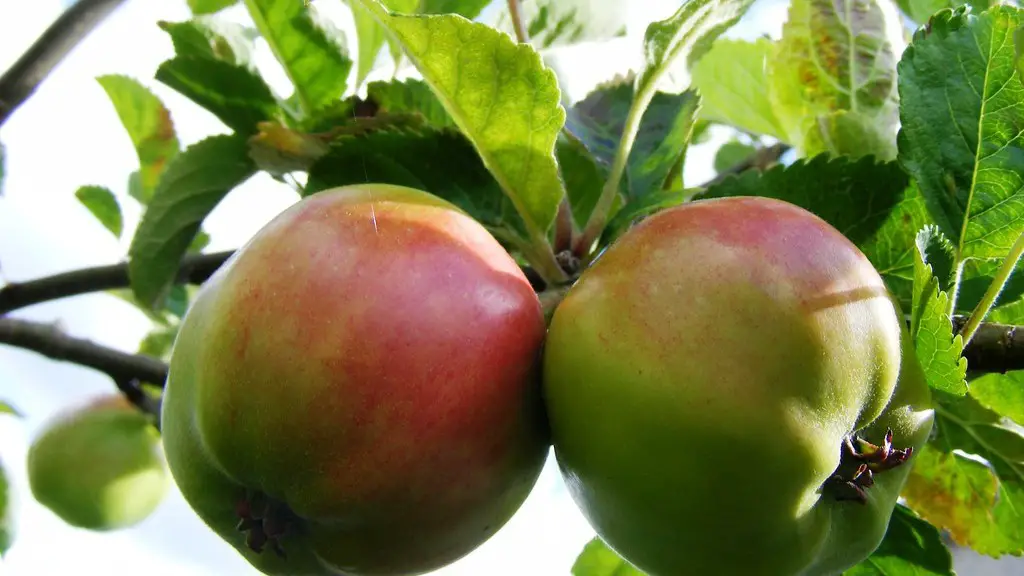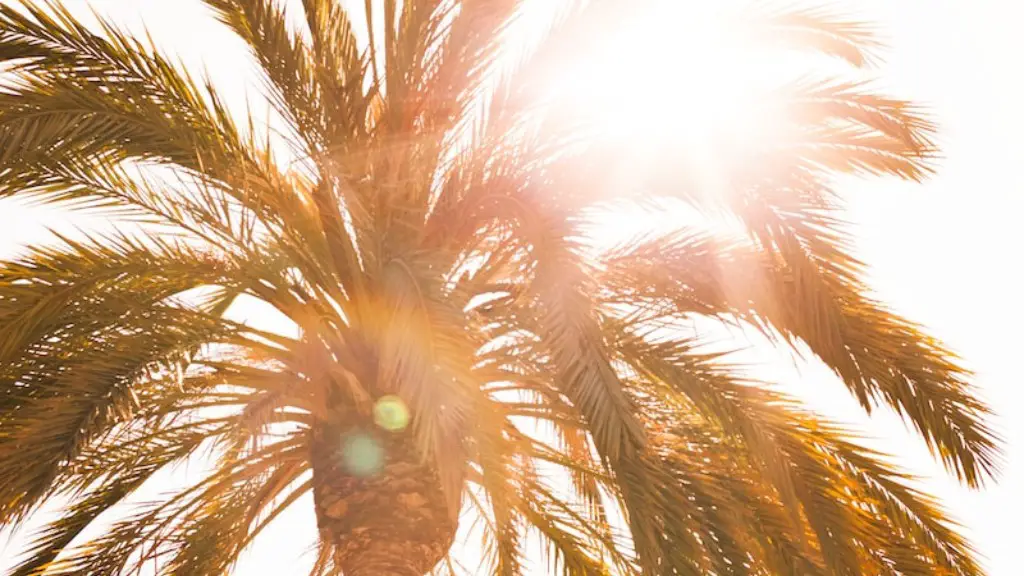Apple trees can be notoriously tricky to grow and it can be difficult to assess whether or not one will actually produce a harvest. But with a little knowledge, it’s possible to identify signs of health in an apple tree and assess if it’s likely to bear fruit. Here are some steps to take when trying to ascertain whether an apple tree will fruit.
Firstly, look at the size of the tree and its branches. If the tree is very small and has few branches, it’s likely too young to bear fruit. Conversely, apple trees that are mature and have multiple branches are more likely to be fruitful. Secondly, inspect the condition of the bark. Apple trees that have healthy bark, free of any spots and discoloration, are a good indication of good overall health.
Thirdly, take a look at the leaves. The leaves of a healthy apple tree should be bright green and evenly shaped. If they appear withered or curled, it could be a sign of poor health. Similarly, if there are a lot of leaf spot and yellowing, it may not be able to bear fruit. Fourthly, examine the blooms and fruits. If there are plenty of flowers, it’s a good sign that the tree is healthy and there may be fruit in time. Lastly, check for signs of damage, disease or pests that could prevent the tree from producing its own crops.
How to Care for an Apple Tree to Help it to Fruit
Assuming the tree is healthy, it is essential to give it the best possible care to ensure it produces fruit. Firstly, prune the apple tree in early spring, removing any dead wood and making sure there is an even spread of branches. Secondly, make sure the soil is free draining and not overly wet or dry; adding a layer of mulch or compost can help to retain moisture. Thirdly, water the tree at the base but not too much, as too much water can suffocate the roots. Additionally, if the tree receives too little water, it may become weakened and unable to produce fruit.
Fourthly, keep the area around the tree relatively free of weeds, as these can compete with the tree for nutrients. Fifthly, inspect the tree for signs of disease or pests, such as aphids or scale insects. Signs to look for include discoloured leaves, curled foliage, damaged bark or pockmarks on leaves. Treating the tree with an appropriate pesticide can help to prevent it from becoming compromised. Lastly, fertilise the apple tree in the late spring or early summer to ensure it’s getting all of the necessary nutrients to support fruit production.
Ensuring Pollination for an Apple Tree to Fruit
Many apple trees require a second tree, of a different variety, in order to cross pollinate and produce fruit. A great way to ensure successful pollination is to plant two different types of apple trees. Make sure they are of different varieties, to increase the chances of successful pollination. Secondly, it’s important to position the two trees close enough so that the wind or insects can carry the pollen to the other tree. Thirdly, if you’re growing apple trees in a garden surrounded by other types of trees or plants, there may be plenty of insects around to carry out the pollination process.
Fourthly, planting bee friendly flowers near the apple trees will attract plenty of bees and other pollinators who can help to ensure successful pollination. Fifthly, if these methods fail, it is possible to hand-pollinate apple trees. This is done by taking a small brush and transferring pollen from the anthers, which are the male reproductive parts, of one flower to the stigma, which is the female part, of another flower. Lastly, it’s a good idea to remove all of the apple blooms the first year or two to let the tree become established before attempting to harvest fruit.
Possible Reasons Why An Apple Tree Does Not Fruit
There are a number of reasons why an apple tree may not bear fruit, even if it appears to be otherwise healthy. Firstly, the tree may be diseased or suffering from a nutrient deficiency. If this is the case, it’s essential to carefully diagnose the issue and take appropriate steps to remedy it. Secondly, an apple tree may be too young or have been recently planted, and may need some time to become established before it starts to produce fruit. Another reason is that the tree may require cross pollination in order to produce fruit, and if this isn’t possible, it’s unlikely it will bear any harvest.
Thirdly, environmental factors such as extreme temperatures, strong winds or heavy rain can cause apple trees to drop their blossoms and abort their fruits. Fourthly, apple trees may be affected by pests or diseases, such as insects and fungi, which can damage or kill flowers and fruits. Lastly, apple trees may not be receiving enough sunlight or may be growing in poor quality soil, both of which can prevent an apple tree from bearing fruit.
Symptoms of Ill Health in Apple Tree
An apple tree suffering from ill health will typically display a number of symptoms. Firstly, it will have a drooping appearance and the branches may look weak and brittle. Secondly, the bark may appear discoloured or have spots or lesions. Thirdly, the leaves may appear yellowed or covered in fungus. Additionally, if the tree is bearing fruit, these may be deformed, discoloured or oddly shaped. Lastly, there may be evidence of pests or diseases, such as aphids, mites or scale insects. If you notice any of these signs, it’s important to take appropriate action to diagnose and treat the problem.
Signs of an Apple Tree That Is Starting To Fruit
Once a tree is established and healthy, there are a few signs to look for that will indicate it may be starting to bear fruit. Firstly, white flowers will appear in late spring and early summer. Secondly, the apples will begin to form and the tree will swell with fruit. Thirdly, the fruits will start to turn their characteristic color and the shape of the fruit should become more obvious. Fourthly, the fruits will start to grow larger and weigh down the branches. Lastly, when the fruits are ready to be harvested, they should be left on the branch for a few weeks to fully ripen before picking.

